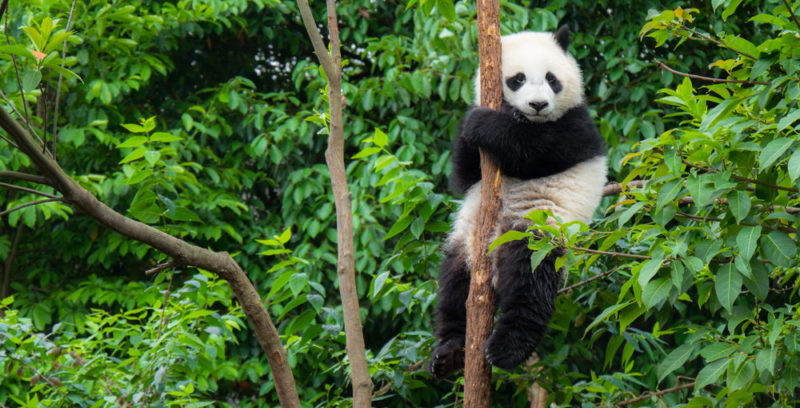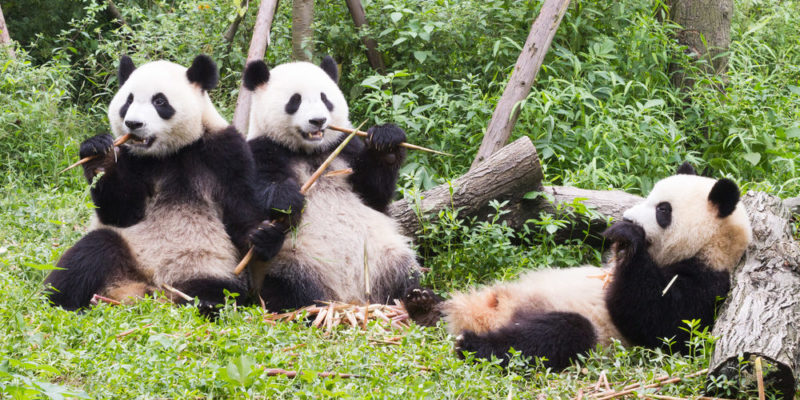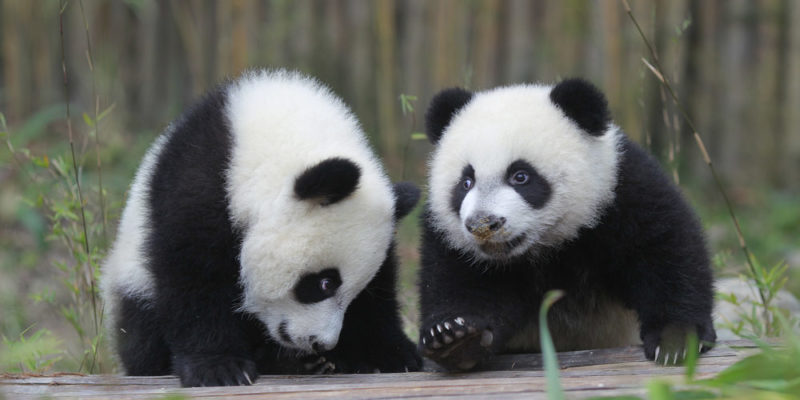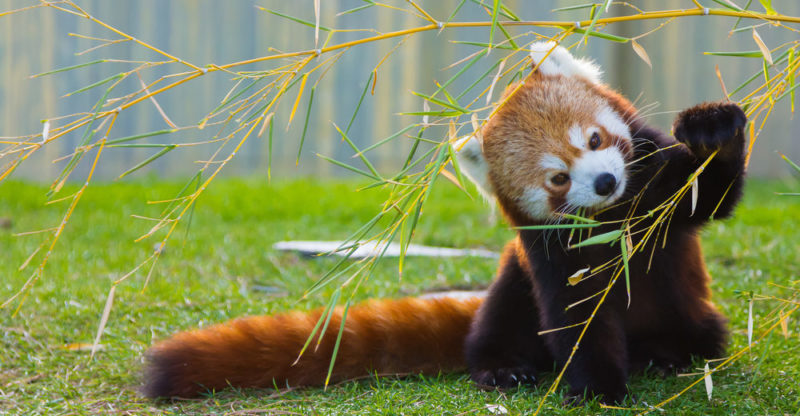We explain what the panda bear is, what the habitat in which it lives is like, and its appearance. In addition, what are its characteristics, food and more.
What is the panda bear?
The panda bear, also known as the Giant Pangasius (Ailuropoda melanoleuca) is an easily recognizable mammal due to its black and white fur with distinctive markings, its docile character and its great beauty.
Origin of the panda bear
It is native to the East (Central China and Tibet), territories with a height of 1,200 to 4,100 meters above sea level, between six mountain ranges (Minshan, Qinling, Qionglai, Liangshan, Daxiangling and Xiaoxiangling).Before human population growth and the devastation of its natural habitats, it also thrived in southern and eastern China .
Panda bear habitat
 Its ideal habitat is the bamboo forests, the mountainous, humid and cool areas that provide it with food and shelter. It manages to adapt to captivity, which is of great importance due to the constant threat of extinction of this species as a result of the loss of its natural habitat.
Its ideal habitat is the bamboo forests, the mountainous, humid and cool areas that provide it with food and shelter. It manages to adapt to captivity, which is of great importance due to the constant threat of extinction of this species as a result of the loss of its natural habitat.
Panda bear life expectancy
In its natural state, the average life expectancy of the panda bear is about 15 years . Thanks to medical and emotional care in captive areas, their life expectancy can be extended to 30 years.The panda cub usually lives with its mother until it is three or four years old (sometimes around six years old, when it is sexually mature).
The high infant mortality in this species has reduced the development of the species: in captivity only 30% of live births manage to survive .
Panda bear appearance
 It is characterized by its white fur and black spots in a very distinctive pattern : on the limbs, back, and around the eyes, which allows it to camouflage itself in the snow and in the jungle . Its thick fur (and body fat ) provides shelter and protection.
It is characterized by its white fur and black spots in a very distinctive pattern : on the limbs, back, and around the eyes, which allows it to camouflage itself in the snow and in the jungle . Its thick fur (and body fat ) provides shelter and protection.
Size, weight and build of the panda bear
On average it is between 1.2 and 1.9 meters in length . Their average weight is 110 kg. Its front legs are longer and very muscular, and allow it to climb and defend itself.A distinction of the species is the existence of a sixth rear toe on its legs (an adaptation of its wrist bone), which it uses as a thumb to grab its food.
Panda Bear Behavior
 He is peaceful and sociable. It is recognized as a solitary animal : in natural environments it delimits its territory with claw marks and urine. Unlike other bears, the panda does not hibernate but descends to warmer areas in the cold months.
He is peaceful and sociable. It is recognized as a solitary animal : in natural environments it delimits its territory with claw marks and urine. Unlike other bears, the panda does not hibernate but descends to warmer areas in the cold months.
Panda bear feeding
Despite being related to the consumption of bamboo, the truth is that this bear is omnivorous , it adapts its diet to the provisions of the environment , and its diet includes meat, plants , fruits, eggs and bamboo.You can consume up to 14 kg in addition to another 5 or more kg of other foods per day.
Customs and breeding of the panda bear
 The panda bear is very docile and often plays , both in captivity and in its natural state (mothers with their young). He enjoys swimming and that allows him to catch fish for food.
The panda bear is very docile and often plays , both in captivity and in its natural state (mothers with their young). He enjoys swimming and that allows him to catch fish for food.Females become sexually mature at four years of age and are fertile for only three days per year . Cubs are often born in pairs, but the mother's attention ( feeding and care) is often focused on just one cub, which is why almost half of wild pandas die before reaching maturity.
Panda bear threatened with extinction
The panda bear is in danger of extinction due to deforestation of its natural habitat and poaching. Its reproduction in captivity is usually more difficult, which also poses a danger to the continuity of the species.
Red panda bear
 The red panda, or small panda, is characterized by its smaller size , its reddish fur and its long, ringed tail. Its shape is more similar to a raccoon than the giant panda, but it shares a sixth finger.
The red panda, or small panda, is characterized by its smaller size , its reddish fur and its long, ringed tail. Its shape is more similar to a raccoon than the giant panda, but it shares a sixth finger.It normally lives in Asia : from the Himalayas and northern Burma, the area of Nepal, Sikkim ( India ), Sichuan and Yunnan (China).
The above content published at Collaborative Research Group is for informational and educational purposes only and has been developed by referring to reliable sources and recommendations from experts. We do not have any contact with official entities nor do we intend to replace the information that they emit.
MA student of the TransAtlantic Masters program at UNC-Chapel Hill. Political Science with a focus on European Studies. Expressed ideas are open to revision. He not only covers Technical articles but also has skills in the fields of SEO, graphics, web development and coding. .
Leave a reply
Your email address will not be published. Required fields are marked *Recent post

Sport: What Is It, Types, Risks, Features, Characteristics and Examples

Dogs: Emergence, Features, Characteristics, Feeding and Breeds

Story: Definition, Elements, Structure, Features and Characteristics

